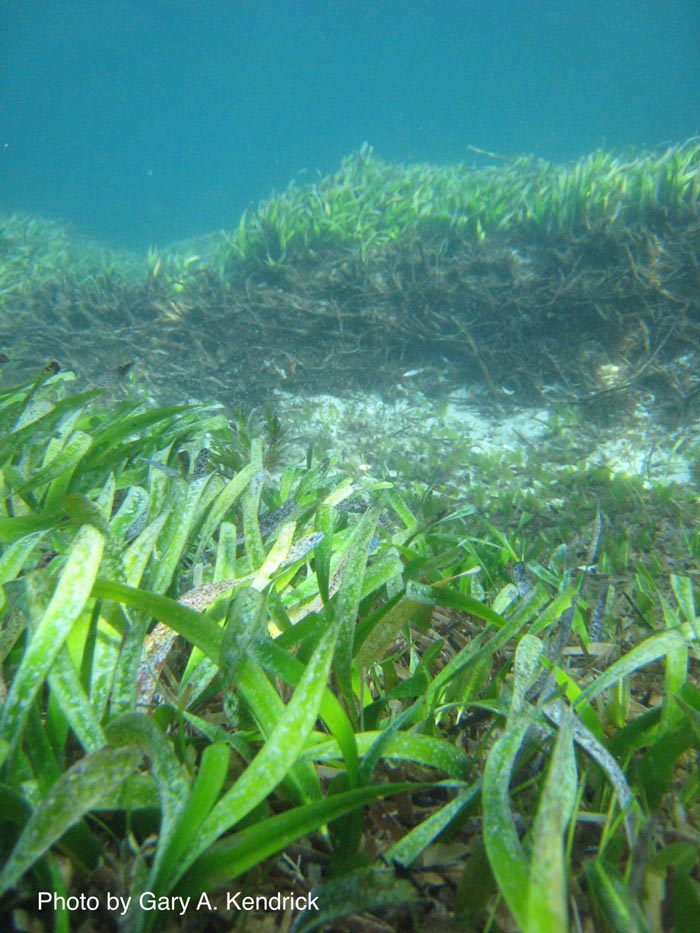
Posidonia Loss: Impact on CO2 Storage and Emissions

This image shows a Posidonia australis meadow.
Credit: Gary A. Kendrick
The loss of underwater posidonia meadows poses two problems: these areas can no longer capture and store atmospheric CO2, and, moreover, they can become a source of this gas by eroding and freeing the carbon stored in the meadow during decades or even centuries.
This is one of the main conclusions reached by an international team which included the participation of the Spanish National Research Council (CSIC), the Universitat Autònoma de Barcelona (UAB) and the Oceans Institute of the University of Western Australia. The team assessed whether the revegetation of underwater meadows is effective in restoring their capacity to act as carbon sinks in relation to the time needed to achieve this (decades). The study was published in the Journal of Ecology.
“The revegetation of meadows prevents the erosion of these organic carbon deposits which have accumulated throughout centuries in meadows which have now disappeared,” points out CSIC researcher Núria Marbà from the Mediterranean Institute for Advanced Studies (IMEDEA).
“Our results indicate that the loss of this ecosystem must have also represented an important loss in the capacity to sequester and store carbon in the sediments of underwater meadows,” she adds.
Pere Masqué, at the UAB and co-author of the study, highlights that “the potential areas available worldwide to carry out marine angiosperm revegetation projects is enormous”, and adds that “these can help reconstruct carbon sinks, as well as preserve older deposits”.
Seagrass meadows are relevant as carbon sinks at a global scale and that is why their conservation and restoration can contribute to mitigating anthropogenic emissions, researchers state. In addition, the results of this study contribute to dispel the doubts which were hindering the development of blue carbon strategies in underwater meadows. Blue carbon is the term given to carbon captured by marine and coastal ecosystems in the form of biomass and sediments.
The researchers explain that the study was conducted at Oyster Harbour, in Western Australia. “This area is colonised by a meadow of Posidonia australis that largely was lost from the 1960s to the end of the 1980s. After 1994, the meadow recovered in part thanks to a series of revegetation efforts which went on until 2006 under the direction of Geoff Bastyan, one of the authors of the research”.
The study relied on using sediment-dating techniques to quantify the accumulation of carbon in repopulated areas and the erosion of historic carbon in areas that were not revegetated. No other revegetation project has been monitored this long in all the world, Marbà concludes.












